The theories on what caused Bayesian superyacht to sink so quickly
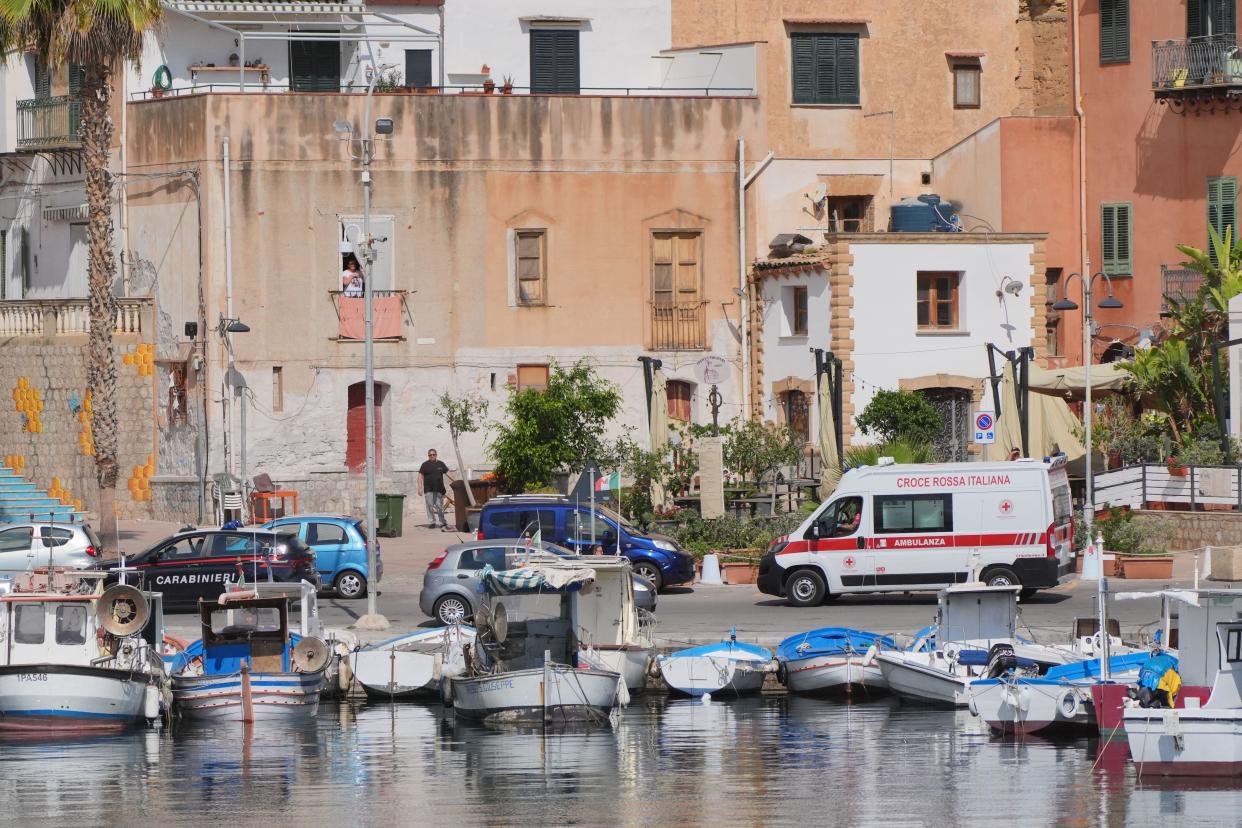
With the final body recovered from the wreckage of the Bayesian luxury British yacht that sank off the coast of Sicily on 19 August, attention now turns to trying to explain how the 56-metre vessel could seemingly sink within a matter of minutes during an intense storm while boats around it remained afloat.
Authorities said on Saturday the most likely cause was a "downburst", a strong downward wind, rather than a water spout - which involves rotating winds like a whirlwind or tornado - as initially suggested.
The disaster, off the port of Porticello, near Palermo, has baffled naval marine experts who said such a vessel, built by Italian high-end yacht manufacturer Perini and presumed to have top-class fittings and safety features, should have been able to withstand such weather.
On Thursday, Giovanni Costantino, CEO of The Italian Sea Group, which manufactures Perini boats, said such yachts were "unsinkable bodies" and "the safest in the most absolute sense". He told Sky News: "This incident sounds like an unbelievable story, both technically and as a fact."
Technology tycoon Mike Lynch and his 18-year-old daughter Hannah died in the tragedy, along with Morgan Stanley International bank chairman Jonathan Bloomer; his wife, Judy Bloomer; Clifford Chance lawyer Chris Morvillo and his wife, Neda Morvillo, and Canadian-Antiguan national Recaldo Thomas, who was working as a chef on the Bayesian.
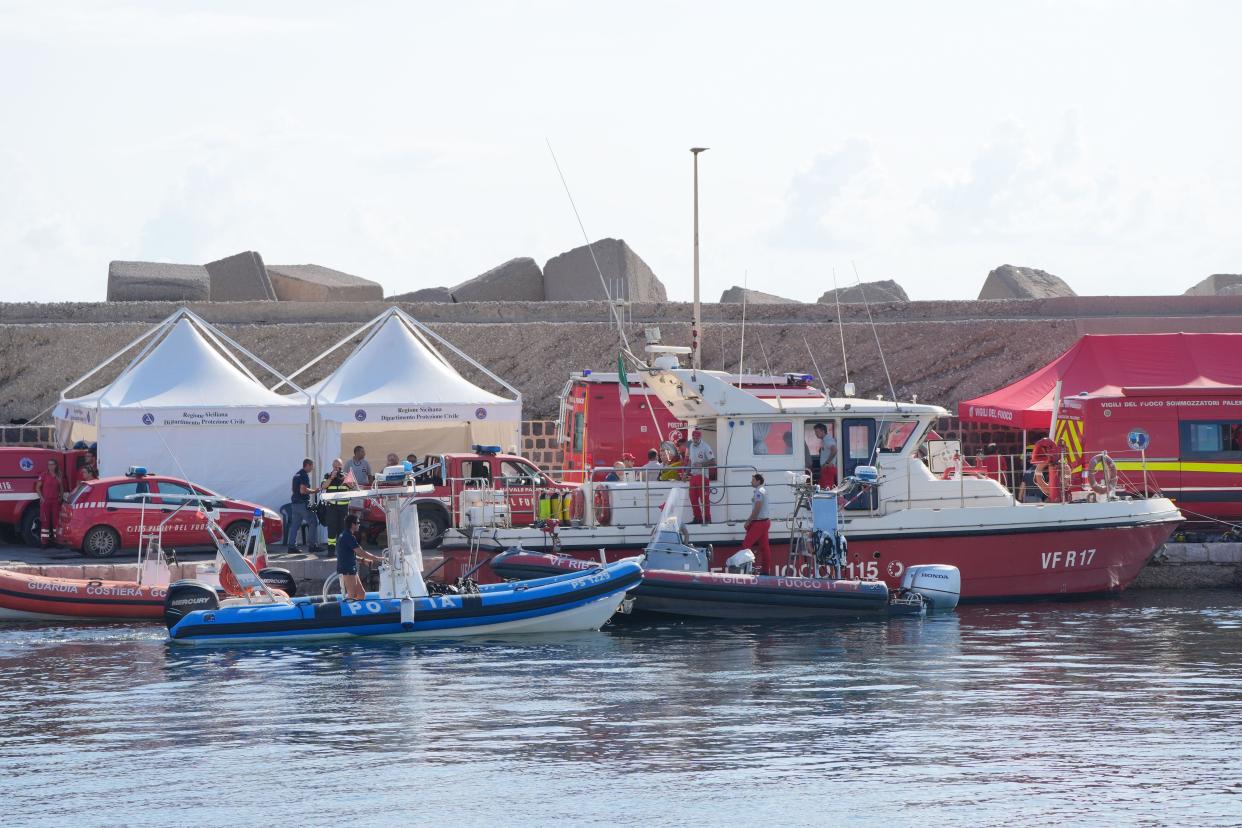
The Bayesian was moored just half a mile or so from shore when it sank as the area was hit by an intense storm, but it remains unclear exactly what caused the 56 metre long vessel to sink within a matter of minutes.
Here are some of theories discussed so far looking at what could have happened.
Downburst
“From the information we have, it is a downburst we are talking about," prosecutor Raffaele Cammarano told a news conference on Saturday.
Downbursts are powerful winds that descend from a thunderstorm and spread out quickly after hitting the ground.
Authorities said one thing they will be looking at is how it could affect one vessel and not others that were nearby at the time.
Cammarano said post-mortem examinations had yet to take place and there were a "whole number of preliminary stages to go through before the autopsies".
He said the passengers were all probably asleep at the time, which was why they failed to escape.
Key to working out exactly what happened will be recovering the wreck, which is lying apparently intact on its side at a depth of 50 metres (164 feet). However, this is likely to prove complex and costly.
"It's in the interests of the owners and managers of the ship to salvage it," another prosecutor, Ambrogio Cartosio said, adding "they have assured their full cooperation".
Hatch or windows were left open
There has been some speculation in media reports that the yacht sank because of a large hatch or windows being left open. Structural engineer Filippo Mattioni pointed to the possibility of "an open hatch" letting in water.
Before the downburst explanation was put forward, yachting experts suggested that the hatches could have broken or smashed during a waterspout, or were left open due to the hot weather, which could have allowed the Bayesian to fill with water quickly and sink. Andrea Ratti, a nautical design professor at Milan Polytechnic university, said a boat the size of the Bayesian could only sink so rapidly by taking in a huge amount of water.
He said that “one can make plausible assumptions that leave room for doubt” about what happened, suggesting that one or more portholes, windows or other openings may have been broken or smashed open by a waterspout, letting in water.
Divers who carried out underwater inspections of the boat reported that the hatch was open, according to La Repubblica, though this has not been confirmed by officials.
However, an industry expert dismissed the open hatch theory, telling Reuters that it should have taken hours for the Bayesian to fill up with enough water to sink it.
Fire department diver Marco Tilotta also told Il Messaggero daily the wreck was “apparently intact”, with “no gashes, no signs of impact”. However, only one half of the hull is visible to divers.
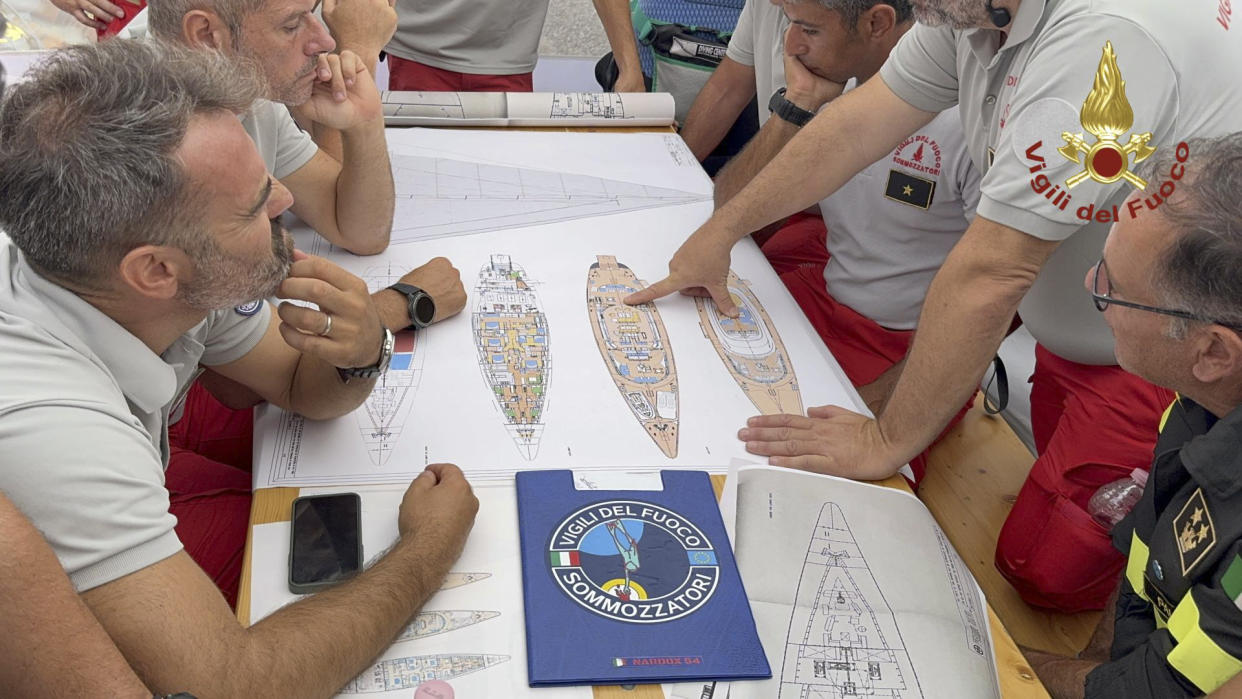
Was the retractable keel used?
The Bayesian was built with a retractable keel - a structure that lies under the hull that helps stabilise boats and acts as a counterweight to the mast. Both Ratti and Mattioni have suggested that if the yacht had been anchored with the keel up, it would have reduced its depth under water from around 10m to 4m – making the vessel less stable.
Ratti said the boat might have started oscillating wildly, “like a pendulum” in strong winds. This would have put exceptional strain on the mast and potentially led to it breaking.
However, he conceded that “this by itself is not enough to justify the sinking”. Investigators have so far not said whether the retractable keel had been used.
Palermo's Coast Guard Chief, Raffaele Macauda, said there was no specific ban for the ship to be anchored where it was struck by the storm, adding that weather bulletins at the time were not reporting a major storm alert for the area.
The yacht’s mammoth mast
Perini Navi, the Italian luxury yacht maker who built the Bayesian, said the vessel featured the world's tallest aluminium mast, measuring 72m.
American entrepreneur Scott Painter – who took over Mike Lynch's Autonomy brand – told MailOnline that he believes the Bayesian may have been more vulnerable to capsizing in bad weather because of the height of its mast.
He said: “That could certainly contribute to a capsize as it would destabilise the yacht. And if it were to lean over too far, it could absolutely capsize the yacht.”
Sam Jefferson, editor of Sailing Today, told The Telegraph: “She has a very tall, aluminium mast – I believe it is the second tallest aluminium mast in the world – and that would not have helped. Stability was obviously the problem in the extremely strong winds she was experiencing and I’d assume the boat was pinned on its side and could not right before it filled up with water.”
Watch: What could have happened to the Bayesian yacht?
Karsten Borner, the captain of another yacht anchored nearby at the time of the storm, claims he saw the Bayesian’s mast “bend and then snap”. However, Ratt said an unusually tall mast is not by itself an element of vulnerability in a storm.
Initial reports suggested the mast had snapped, however a source told Corriere della Sera that divers found the mast in one piece.
Fire department diver Marco Tilotta said the wreck was intact and the mast was still attached. He added, that divers had not been able to inspect the full length of the mast but the section they had seen was undamaged.
Matthew Schanck, chair of the Maritime Search and Rescue Council, told the BBC that it was difficult to say whether the mast broke, saying it was “pure guesswork”. He pointed out that divers have said the vessel is “basically intact” and if the mast was broken, “that would be a significant thing that would be reported”.
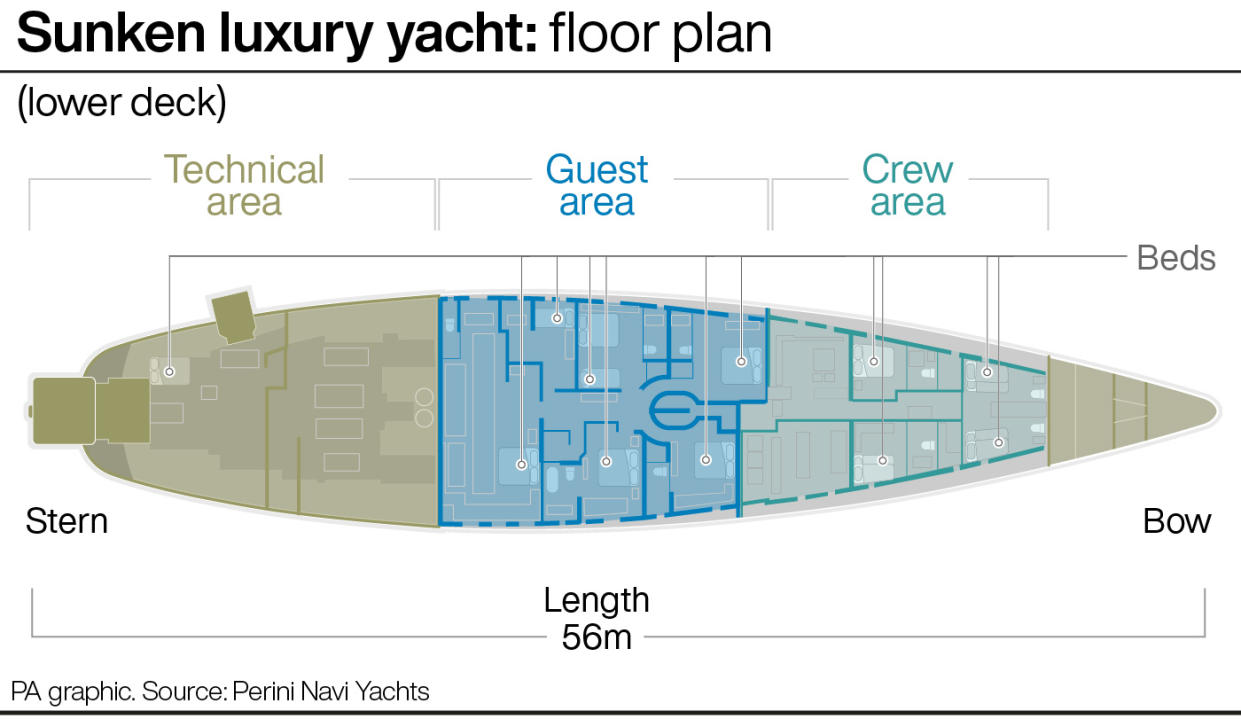
Freak waterspout was caused by 'higher than usual temperatures'
Italian authorities have reported stormy conditions that caused the yacht to sink. It was initially believed the Bayesian may have been hit by a waterspout – a rotating column of wind that forms over a body of water and is often likened to a tornado.
According to the US National Ocean Service, tornadic weather spouts have the “same characteristics” as a land tornado and are often accompanied by severe thunderstorms, “high winds and seas, large hail, and frequent dangerous lightning”.
But speaking at a news conference on Saturday, authorities said a "downburst" was more likely to be the cause (see more above).
Some climate experts have said the storm could have been caused by global warming. Luca Mercalli, president of Italy's meteorological society, said the sea surface temperature around Sicily in the days leading up to Bayesian’s sinking was about 30C – almost 3C more than normal. He told Reuters: “This creates an enormous source of energy that contributes to these storms.”
Borner, the captain of the boat moored nearby, also blamed more frequent episodes of intense heat during the summer months for playing a role in causing such storms.
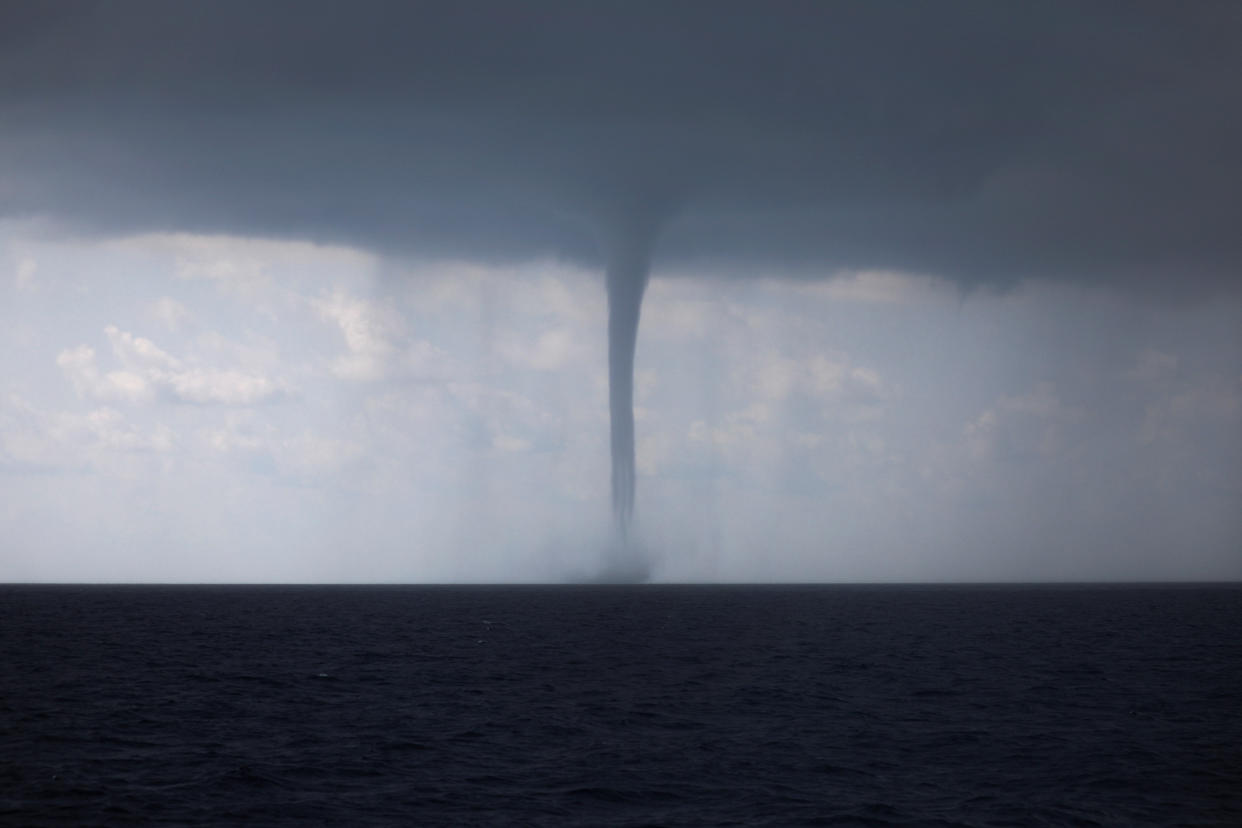
‘A series of human errors’
The Bayesian was built in 2008 by Italian luxury yacht maker Perini Navi and was refitted twice – but reportedly not by Perini himself.
Giovanni Costantino, CEO of the Italian Sea Group TISGR.MI, which owns Perini, said the yacht was “one of the safest boats in the world” and basically unsinkable. He suggested that the sinking was down to a series of human errors – despite the storm being expected.
Speaking to Italian media, the CEO said that had the crew shut all doors and hatches, turned on the engine, lifted the anchor, lowered the keel and turned the yacht to face the wind, they would have suffered “zero damage”. He added that data showed it took 16 minutes from when the wind began buffeting the yacht, and it began taking on water, for it to sink.
Cartoisio said the tragedy will be even more painful if the investigation shows it was caused by "behaviours that were not aligned to the responsibilities that everyone needs to take in shipping".
He said that while the yacht had been hit by a sudden meteorological event, it was "plausible" that crimes of multiple manslaughter and causing a shipwreck through negligence had been committed.
But he added that the investigation so far is not focusing on any one individual.
Captain James Cutfield has been questioned, along with the other survivors. None of them have commented publicly on the sinking.
It has not been possible to carry out alcohol or drug tests on the survivors as they were in a state of shock and needed treatment for their injuries, officials said.
There is no legal obligation for any of the survivors to stay in Italy, but they are expected to cooperate with the investigation.
Will we ever know what happened to the Bayesian?
Experts are struggling to identify any single one cause, and are hesitant to make any conclusions, especially as the yacht was presumed to have top-class fittings and safety features. Another yacht anchored next to it remained afloat during the weather event.
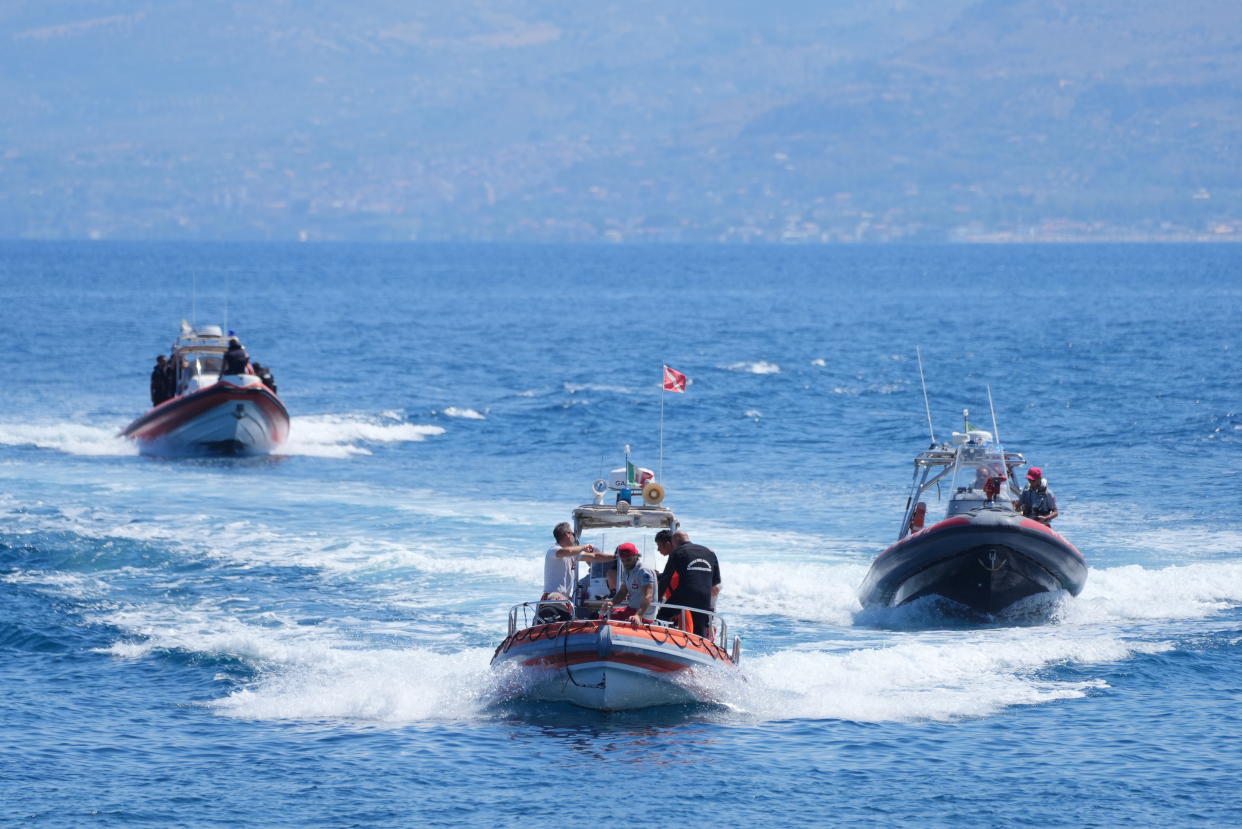
Matthew Schanck, chair of the Maritime Search and Rescue Council, described the sinking as a potential “black swan event” – something that is unpredictable and is beyond what is normally expected from a situation and that has potentially severe consequences.
Nevertheless, he said he was confident the authorities would “get to the bottom” of what caused the vessel to sink, thanks to the accounts of survivors, witnesses and examination of the ship, which appears to have remained intact on the sea bed.
Who will lead the investigation?
Leading experts have already lent their knowledge of what could have caused the sinking of the Bayesian.
The official investigation into the disaster is being led by prosecutors in the nearby town of Termini Imerese.
Ambrogio Cartosio, the chief prosecutor of Termini Imerese, will be heading up the investigation alongside the assistant prosecutors.
The UK’s Marine Accident Investigation Branch is also assisting with inquiries. Their investigation is likely to take months to complete.


